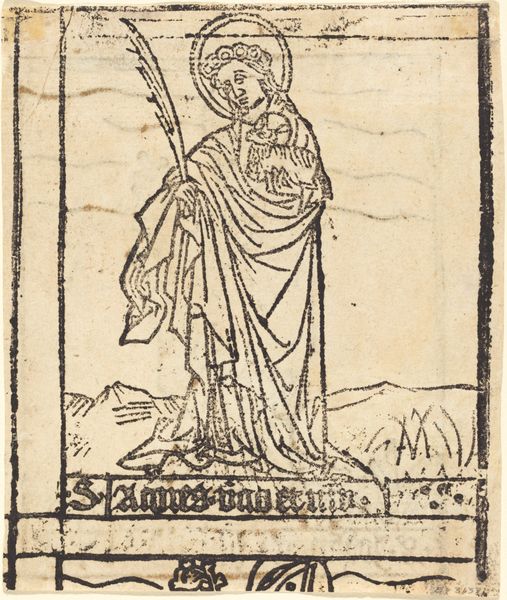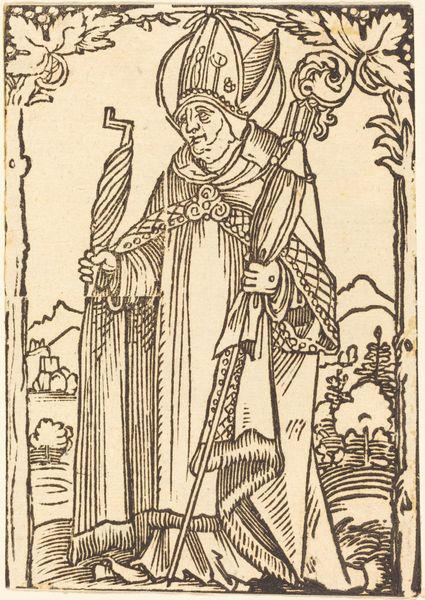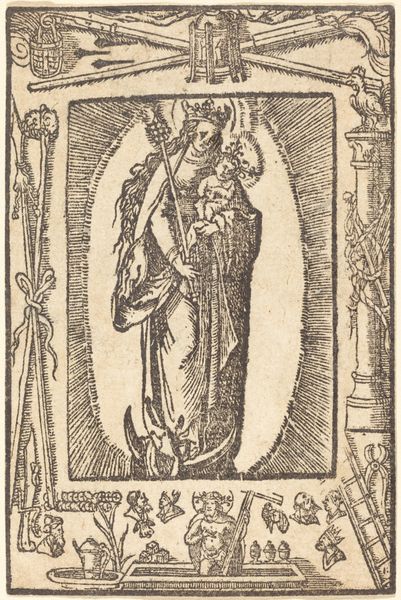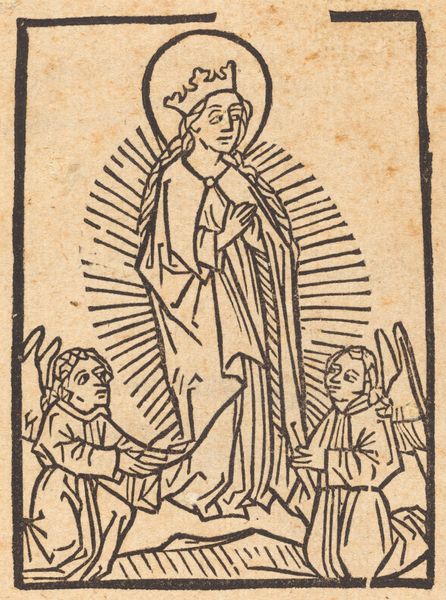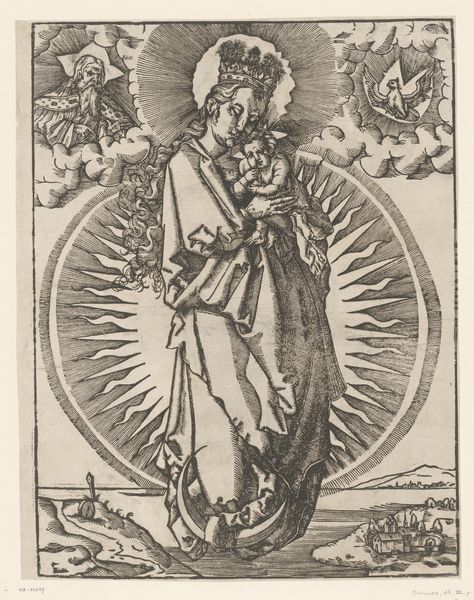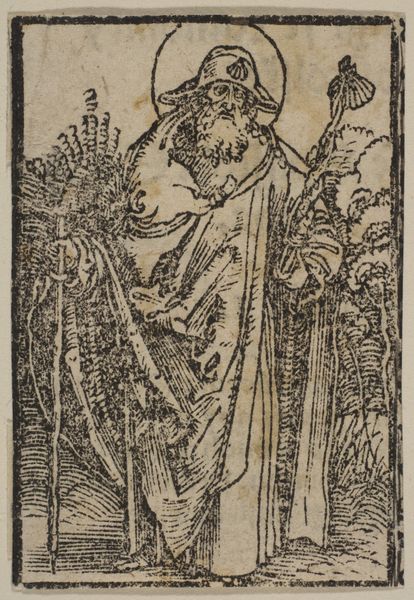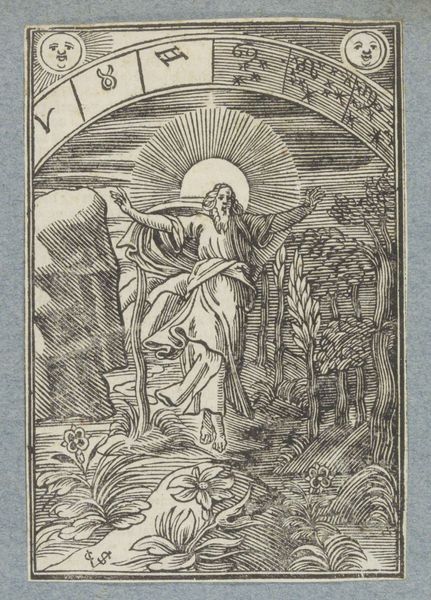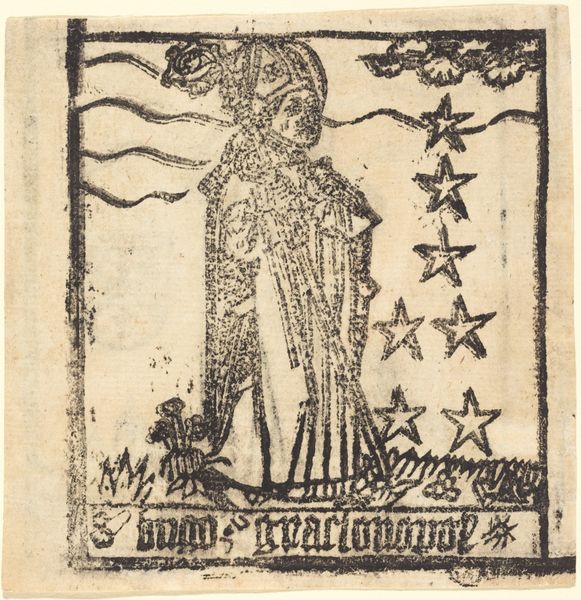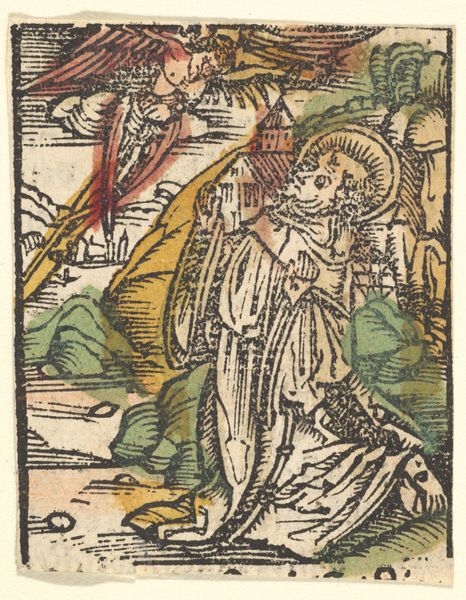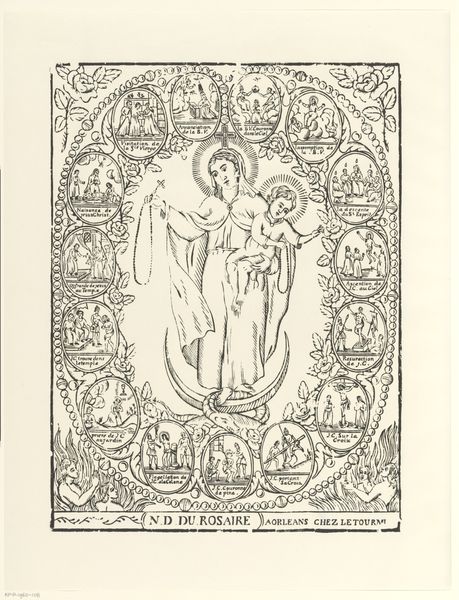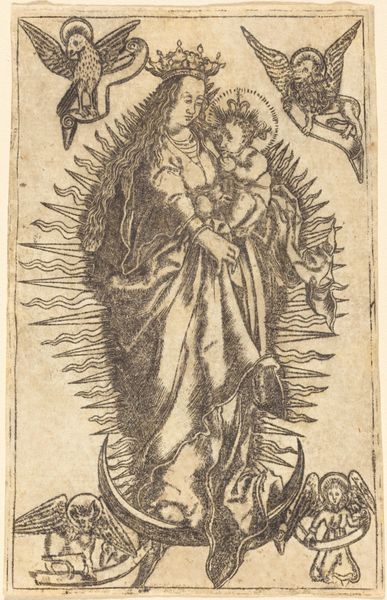
drawing, print, woodcut
#
portrait
#
drawing
#
pen drawing
# print
#
figuration
#
woodcut
Copyright: National Gallery of Art: CC0 1.0
Curator: Up next, we have a striking piece titled "The Virgin and Child," a woodcut and pen drawing believed to have been created sometime between 1460 and 1480 by an anonymous artist. Editor: It's stark, isn’t it? The bold, graphic quality jumps out. The lines are so assertive, especially in the radiating halo effect around the figures and the rather schematic waves at the top. Curator: Indeed. The choice of medium is key here. Woodcuts, widely available in the 15th century, made religious imagery accessible to a broader public, potentially influencing devotional practices for those, particularly women, seeking solace or guidance through the maternal figure. Editor: The composition, while simple, is quite effective. The Virgin occupies the majority of the frame. I'm drawn to the textural contrasts: the Virgin's robes versus the surrounding radiating lines. The linear quality almost feels contemporary in its flatness. Curator: Right, consider the historical context of representing motherhood. How might a young woman encountering this image internalize ideas about female identity and the expectations placed upon them by religious and societal norms? What power dynamic does this depiction represent, with the male child centered? Editor: It makes one consider semiotics; the crown and staff, immediately signifying royal authority. It suggests the earthly power connected to her divine role. Even the plants lining the base, seemingly simple decoration, reinforce that divine domain on earth. Curator: I agree. This print serves not only as a devotional image but also as a visual embodiment of complex theological and social narratives surrounding the roles of women and the concept of divine motherhood. Editor: In that respect, these artistic and formal components support wider social structures, it truly binds intention and technique. It certainly resonates in a rather captivating way, centuries later.
Comments
No comments
Be the first to comment and join the conversation on the ultimate creative platform.
